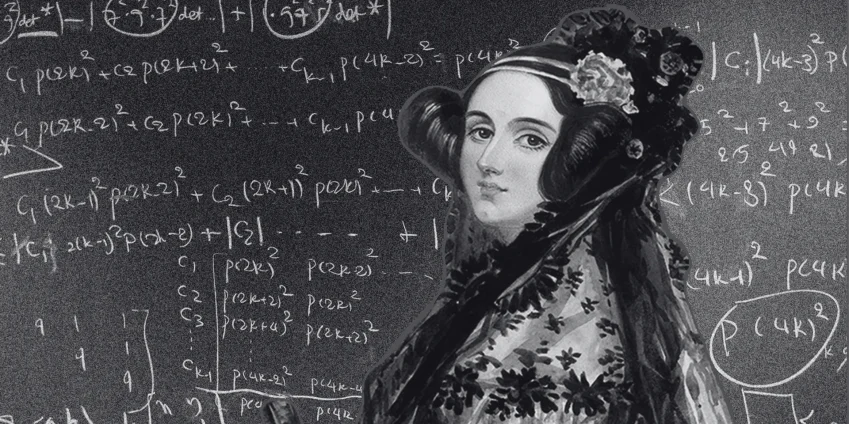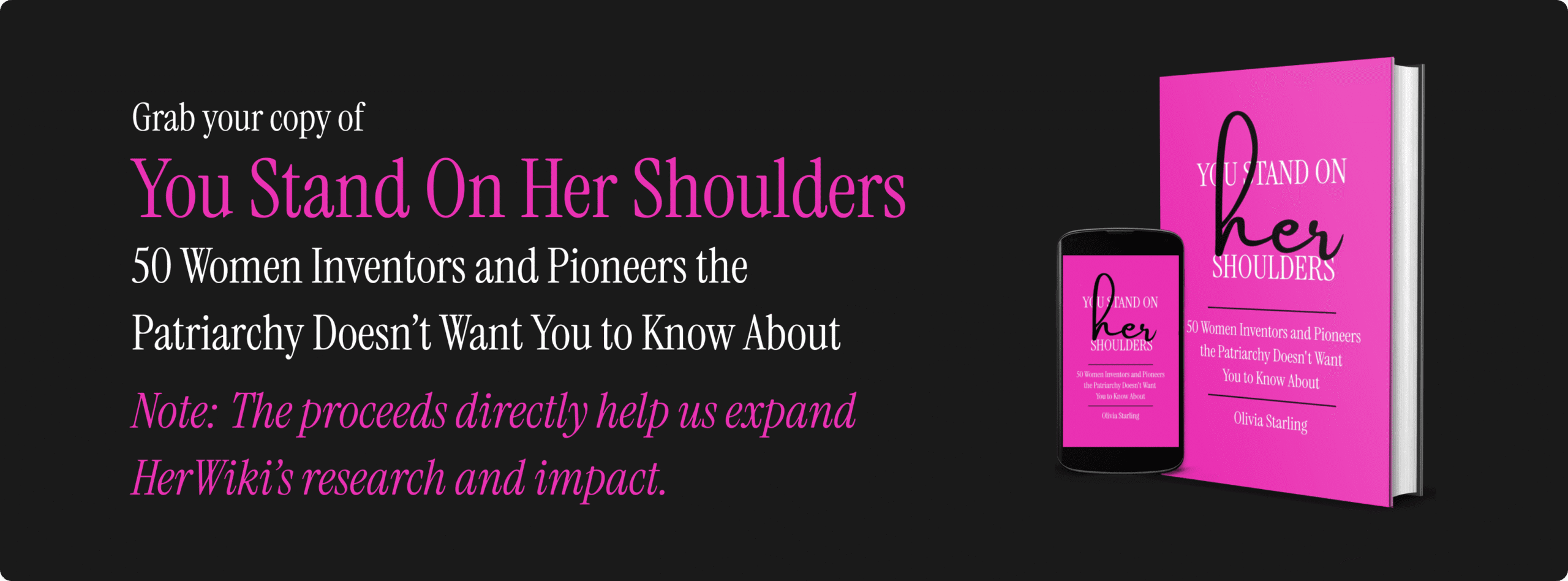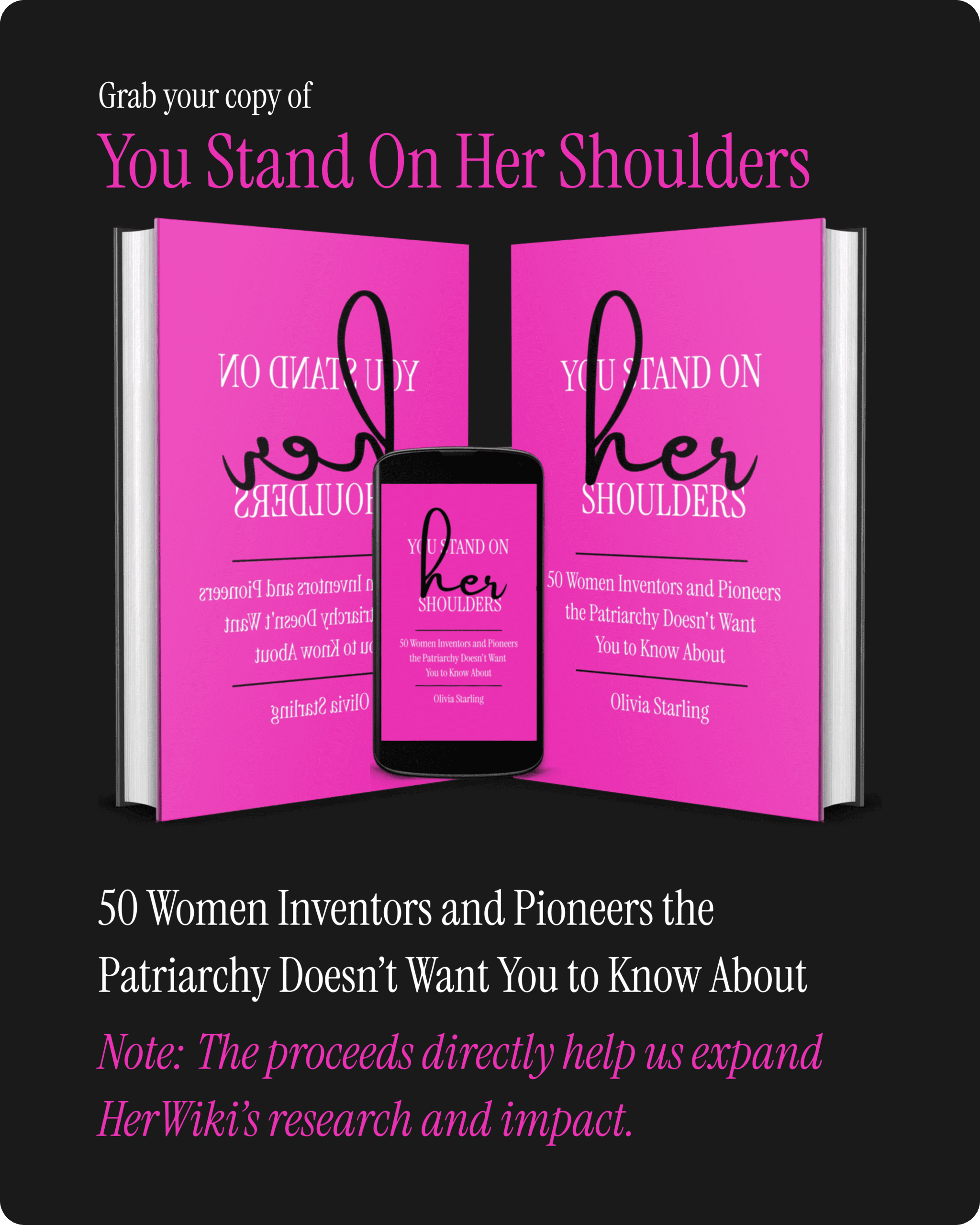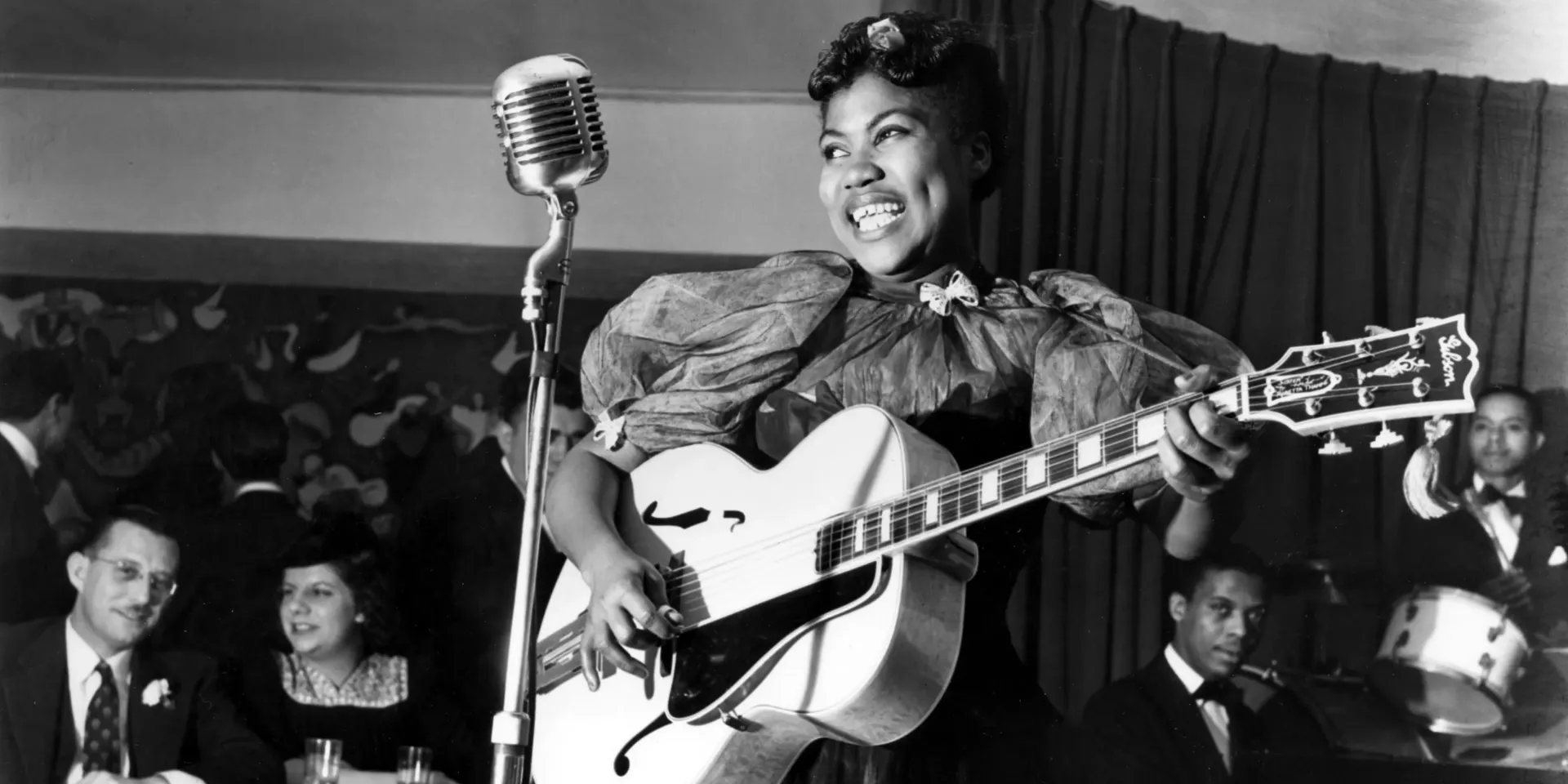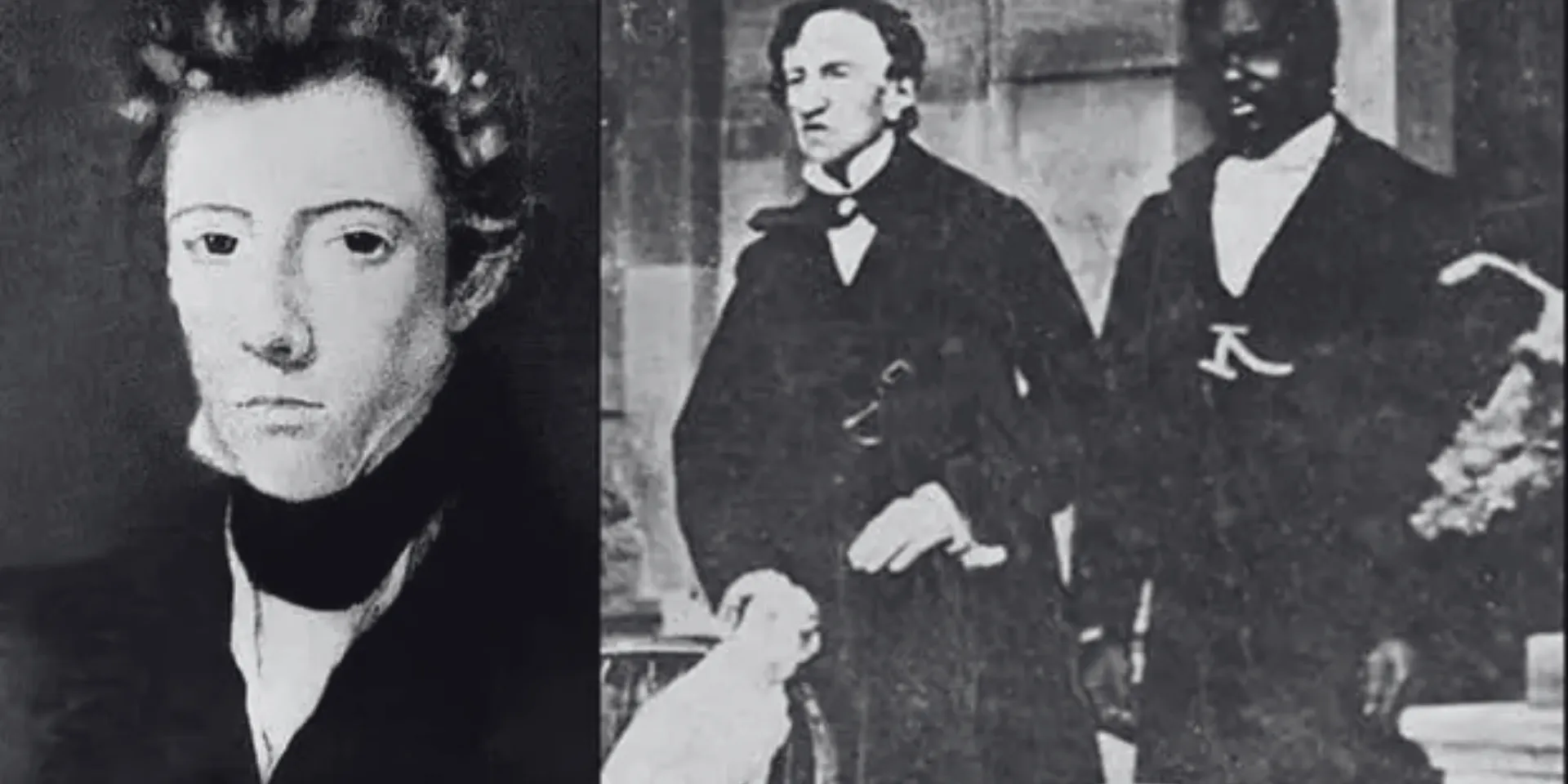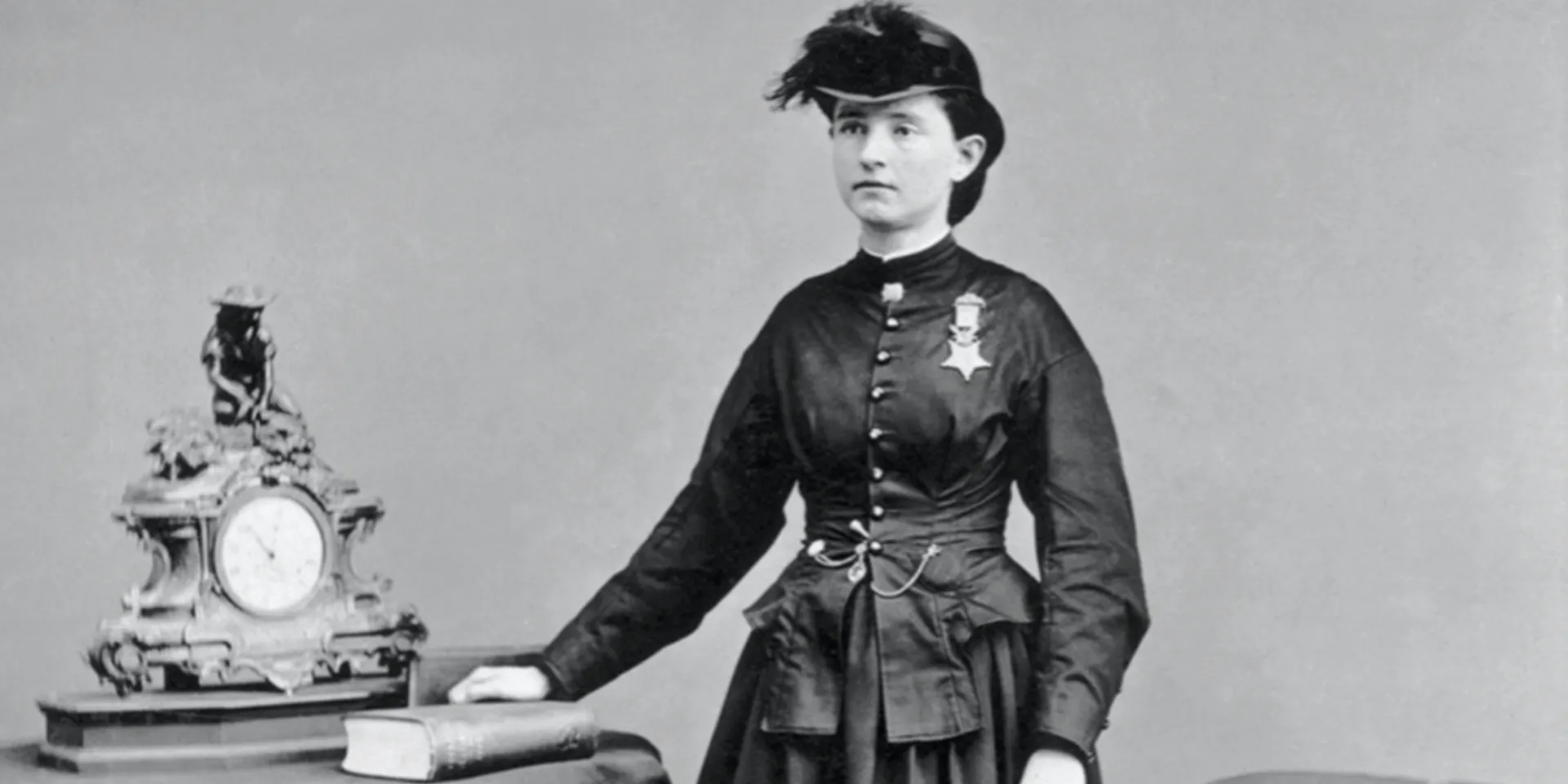Contents
ToggleThe year was 1843. While the world was still lit by gas lamps and messages traveled by horseback, a young woman sat at her writing desk in London, penning notes that would lay the foundation for the entire digital age.
She wasn’t just translating a technical paper about a machine that didn’t exist. She was seeing something no one else could see—that these calculating engines could do more than just crunch numbers. They could create music, art, and transform human thought itself.
This woman was Ada Lovelace, and without her revolutionary vision, you wouldn’t be reading these words on a screen today.
The Daughter Nobody Wanted
Augusta Ada Byron entered the world on December 10, 1815, to parents who couldn’t have been more different. Her father, Lord Byron, was England’s most scandalous poet – famous for his romantic affairs, revolutionary politics, and rumors of incest. Her mother, Lady Anne Isabella Byron, was a mathematical prodigy who believed logic could cure any moral failing.
Byron had wanted a son. When told he had a daughter, he wrote with disappointment about the “glorious boy” that never materialized. This rejection would define Ada’s entire childhood, though she wouldn’t learn the full extent of it until years later.
Lady Byron left her husband when Ada was five weeks old, taking the baby to her parents’ estate. Byron signed the separation papers reluctantly and left England forever. He died in Greece when Ada was eight, fighting for Greek independence. Ada never saw him again.
The separation turned out to be more than just a family tragedy—it was a public scandal that made Ada infamous before she could even walk. In Regency England, divorced women were social pariahs, and their children carried the stigma. Lady Byron knew she had to present herself as the perfect mother to maintain any social standing.
But perfect mothers in 1815 weren’t supposed to be mathematically gifted intellectuals. Lady Byron’s approach to raising Ada reflected her belief that mathematics and logic could prevent moral corruption. If Byron’s “madness” was hereditary, perhaps rigorous intellectual discipline could override it.
This created a strange childhood for Ada. She received an education that would have been exceptional for a boy, but it came with constant surveillance. Lady Byron hired friends to watch Ada for any signs of “moral deviation.” Ada called these watchers “the Furies” and later complained they invented stories about her behavior.
The surveillance worked in unexpected ways. Instead of crushing Ada’s spirit, it taught her to hide her true thoughts and develop her intellectual life in secret. She learned early that women had to be strategic about pursuing knowledge.
Lady Fairy’s Flyology
Ada’s mathematical talent showed up early, but so did her tendency to question everything. When other children her age were learning basic arithmetic, she was already asking why mathematical formulas worked the way they did.
At age twelve, she decided she wanted to fly. Most children would have jumped off furniture with makeshift wings. But Ada was nothing like most children. She approached the problem like a seasoned engineer. She studied bird anatomy to understand wing-to-body ratios. She researched materials – paper, silk, wire, feathers – to determine the best construction methods. She planned to write a book called “Flyology” documenting her findings.
This wasn’t just childhood curiosity. It revealed a mind that saw problems as puzzles to be solved through systematic investigation. She didn’t accept that something was impossible just because adults said so.
Her childhood was also marked by serious illness. At eight, she suffered headaches so severe they affected her vision. At thirteen, she contracted measles and became paralyzed. Doctors prescribed complete bed rest for nearly a year, which may have extended her disability rather than cured it.
Being bedridden could have ended her intellectual development. Instead, Ada used the time to read everything she could find about mathematics and science. By the time she could walk with crutches at age fifteen, she had educated herself beyond most adults.
The combination of physical limitation and intellectual freedom shaped her thinking. She learned that mental exploration could take her places her body couldn’t go. This perspective would later help her envision computational possibilities that even Charles Babbage couldn’t see.
The Educational Revolution
Traditional education for wealthy young women in the 1820s focused on languages, music, drawing, and enough mathematics to manage household accounts. Ada’s education was revolutionary by comparison.
Lady Byron hired the best mathematicians and scientists in England as tutors. William Frend taught her basic mathematics. William King (not to be confused with her future husband) introduced her to advanced concepts. But the most important relationship was with Mary Somerville.
Mary Somerville was one of the few women in England recognized as a serious mathematician and scientist. She had translated complex French mathematical texts and conducted original research in astronomy. When she agreed to tutor Ada, it offered more than just academic instruction—it was mentorship from someone who understood what it meant to be a woman in a male-dominated field.
Somerville taught Ada that mathematics was far bigger than your typical boring calculations. It was a language for describing the natural world. She showed Ada how mathematical principles could explain everything from planetary motion to chemical reactions. This broad view of mathematics as a tool for understanding reality would later help Ada recognize the potential of computing machines.
Augustus De Morgan, one of England’s leading mathematicians, also tutored Ada. He was amazed by her abilities and wrote to Lady Byron that Ada might become “an original mathematical investigator, perhaps of first-rate eminence.” This was extraordinary praise in an era when women were thought incapable of original mathematical thinking.
Ada’s approach to learning was unique. She didn’t just memorize formulas – she questioned the underlying logic. In a letter to De Morgan, she wrote about how mathematical formulas could transform in ways that seemed “apparently impossible” at first sight. She compared these transformations to “sprites and fairies” that changed shape unexpectedly.
This poetic approach to mathematics wasn’t considered legitimate by most academics. But it reflected Ada’s belief that intuition and imagination were as important as logical reasoning. She called her method “poetical science” – a combination of artistic creativity and mathematical rigor.
Meeting the Father of Computer
In June 1833, eighteen-year-old Ada attended one of Charles Babbage’s famous Saturday evening parties. These gatherings brought together London’s leading scientists, mathematicians, and intellectuals to discuss the latest discoveries and inventions.
Babbage was forty-one and already famous for his Difference Engine, a mechanical calculator that could perform mathematical operations automatically. But he was also working on something far more ambitious – the Analytical Engine, a machine that could be programmed to solve any mathematical problem.
Most people who saw Babbage’s machines focused on their mechanical complexity. Ada saw something different. When Babbage showed her the prototype Difference Engine, she immediately understood that it wasn’t just a fancy calculator. It was a machine that could manipulate symbols according to rules.
Babbage was impressed by Ada’s insight. He began calling her “the Enchantress of Number” and invited her to visit his workshop regularly. Their friendship would last until Ada’s death and produce the most important collaboration in the history of computing.
Beyond Ada’s mathematical ability, what made their partnership special was her unique perspective as someone who combined logical thinking with artistic imagination. Babbage was a brilliant engineer who could design complex machines. Ada was a visionary who could see what those machines might become.
The timing was crucial. Ada met Babbage just as she was developing her intellectual identity as an adult. She was young enough to absorb new ideas quickly but educated enough to contribute original insights. Babbage gave her access to the most advanced technological thinking of the time. She gave him someone who could understand his vision and help communicate it to the world.
Marriage and Social Expectations
In 1835, Ada married William King-Noel, later the 1st Earl of Lovelace. The marriage was arranged by Lady Byron, who wanted to ensure Ada’s social respectability. King was wealthy, well-connected, but in no way a good match to Ada’s intellect.
HerWiki is built and maintained by the support of amazing readers like you. If this story inspired you, join the cause and help us make HerWiki bigger and better.
On the surface, it seemed like a fairy tale—three homes, three children, and a title. But marriage in Victorian England meant that legally, Ada ceased to exist as an independent person. Everything she owned, including her intellectual work, belonged to her husband.
They had three children quickly – Byron in 1836, Anne Isabella in 1837, and Ralph Gordon in 1839. The birth of her children brought complications that nearly ended her mathematical pursuits. After Annabella’s birth, Ada suffered from an illness that took months to cure. Society expected her to settle into motherhood and abandon her “unwomanly” interests in mathematics. Her mother even hired William Benjamin Carpenter as a tutor for the children, but Carpenter had other intentions. He fell in love with Ada and tried to start an affair, positioning himself as someone who could understand her frustrated intellectual ambitions. When Ada realized his true intentions, she cut him off completely—but the incident shows how even her intellectual life was seen by men as an opportunity for conquest.
But the marriage wasn’t entirely to Ada’s loss. As intended by Lady Byron, the marriage gave Ada financial security and social position that allowed her to pursue her work. King’s wealth meant she could hire tutors, buy books, and afford to engage in her “extracurricular activities.” She continued her mathematical work in secret when necessary, maintaining correspondence with Babbage and other scientists. She developed what she called “poetical science”—a fusion of imagination and analysis that she believed was essential for true innovation. This wasn’t just mathematics; it was mathematics elevated by imagination, logic enhanced by intuition.
But it also brought new pressures. Ada was now responsible for managing multiple households and maintaining the social obligations of a countess. She had to navigate the expectations of being a proper Victorian wife while pursuing work that challenged conventional gender roles.
The balance wasn’t always successful. Ada began gambling heavily in the 1840s, partly as an escape from domestic pressures. She also had several emotional affairs, though whether they were physical relationships remains unclear. These behaviors reflected the tension between her intellectual ambitions and social constraints.
The Analytical Engine Translation
In 1842, Ada undertook the project that would put her on the big charts. Charles Babbage had given a lecture about his Analytical Engine at the University of Turin. Luigi Menabrea, a young Italian engineer who would later become Prime Minister of Italy, had transcribed the lecture in French and published it in a Swiss scientific journal.
Charles Wheatstone, a friend of Babbage’s, asked Ada to translate Menabrea’s article into English. This seemed like a straightforward assignment, but Ada had bigger plans. She decided to add her own notes explaining how the machine worked and what it could do.
The translation itself was competent but unremarkable. The notes were revolutionary. Ada wrote seven appendices, labeled A through G, that were three times longer than the original article. These notes contained insights about computing that wouldn’t be fully understood for another century.
Note G was the most important. It contained a complete algorithm for calculating Bernoulli numbers using the Analytical Engine. This wasn’t just theoretical speculation – it was a step-by-step program that would have worked if the machine had ever been built.
But Ada’s contribution went beyond programming. She understood that the Analytical Engine was fundamentally different from earlier calculating machines. Previous devices could only do arithmetic. The Analytical Engine could manipulate any symbols according to any rules.
This insight led Ada to one of the most famous passages in computing history. She wrote that the machine “might act upon other things besides number, were objects found whose mutual fundamental relations could be expressed by those of the abstract science of operations.” She specifically mentioned music, suggesting that the machine could compose elaborate musical pieces.
Seeing Beyond the Numbers
What made Ada’s notes revolutionary wasn’t just their technical content. It was their vision of what computing could become. While Babbage and other engineers focused on the machine’s ability to solve mathematical problems, Ada saw its potential to process and manipulate any kind of information.
She understood that once you could represent music, art, or language as symbols, ones and zeroes, a machine could process them just like numbers. This insight anticipated everything from digital music to computer graphics to artificial intelligence.
Ada also grasped the distinction between a machine’s mechanical operations and its logical structure. She wrote that different specialists might be needed to understand physical engineering versus the abstract principles of computation. This distinction between hardware and software thinking wouldn’t become common until the 20th century.
Her notes also contained a famous dismissal of artificial intelligence that would be debated for generations. She wrote that “The Analytical Engine has no pretensions whatsoever to originate anything. It can do whatever we know how to order it to perform.” This became known as “Lady Lovelace’s Objection” and influenced discussions about machine intelligence for over a century.
Modern computer scientists argue that Ada was wrong about artificial intelligence, but she was asking the right questions. But knowing what we know about how the modern tech bros have made the planet and society absolutely unbearable in more than one way, their claims hardly hold any water. Lady Lovelace understood that the relationship between human creativity and machine capability would be one of the central issues in computing and she was right about everything down to the last dot.
The Stolen Credit
Ada’s contributions to computing have been debated since her death. Some historians argue that she was the first computer programmer. Others claim that Babbage wrote most of the algorithms and Ada simply translated and explained them which couldn’t be farther from the truth.
Babbage had made countless attempts to write several programs for the Analytical Engine before Ada’s notes, but to no avail. Ada’s Note G was “the first complete algorithm published for public consumption.” Whether she deserves credit as the “first programmer” depends on how you define programming. Had Babbage written a finished computer program before Ada, in 1843 England, there is absolutely no way that the misogynistic men in power wouldn’t have hung a copy of the program at the door of 10 Downing Street for generations to come.
More importantly, Ada’s notes were the first clear explanation of what the Analytical Engine could do and why it mattered. Babbage was brilliant at mechanical design but struggled to communicate his vision. Ada could explain complex technical concepts in language that people could understand.
She also contributed original insights that Babbage missed. Her recognition that the machine could process non-numerical information was crucial. Babbage thought of his engine primarily as a mathematical tool. Ada saw it as a general-purpose symbol manipulator.
The debate over credit reflects broader issues about how women’s intellectual contributions are recognized. When women work in collaboration with men, their contributions are either minimized or attributed to their male partners altogether, every single time.
Gambling and Mathematical Modeling
In the late 1840s, Ada became seriously involved in gambling, particularly horse racing. This was more than just recreational betting. She tried to apply mathematical principles to create a systematic approach to winning.
Ada formed a syndicate with male friends and attempted to develop a mathematical model for successful large bets. The idea was to use statistical analysis to identify patterns in race results that could predict future outcomes.
The venture was a disaster. Instead of winning consistently, Ada and her partners lost thousands of pounds. In 1851, she had to confess the extent of her debts to her husband, who was shocked by the amount she owed.
Some historians see Ada’s gambling as evidence of addiction or mental instability. But it can also be understood as an extension of her mathematical interests. She was trying to apply scientific methods to understand complex systems—the same approach she had used with the Analytical Engine.
The failure of her gambling system revealed the limits of mathematical modeling when applied to random events. Ada learned that even sophisticated analysis couldn’t overcome fundamental uncertainties in complex systems. This lesson would be relevant to later developments in statistics and chaos theory.
The Final Years
During the 1840s, Ada developed a close relationship with Andrew Crosse’s son John. The exact nature of this relationship remains unclear because John destroyed most of their correspondence after Ada’s death as part of a legal agreement.
What’s known is that Ada left John the only personal items her father had given her – suggesting the relationship was deeply important to her. During her final illness, she panicked at the thought of being kept from seeing him.
Ada also had a complex relationship with her half-sister Elizabeth Medora Leigh, daughter of Byron’s half-sister Augusta. In 1841, Lady Byron told both women that Byron was Medora’s father as well as Ada’s, making them half-sisters connected by incest.
Ada’s reaction was remarkably calm. She wrote to her mother that she wasn’t surprised and had suspected the truth for years. But she blamed Augusta Leigh rather than Byron, calling Augusta “more inherently wicked than he ever was.”
These revelations about her family’s past affected Ada’s understanding of her own identity. She had always been told that her father was morally corrupt and potentially insane. Learning about the incestuous relationship confirmed her worst fears about her heredity.
Lady Lovelace’s Final Algorithm
In her last years, Ada continued working on mathematical projects despite declining health. In 1851, she wrote to her mother about “certain productions” she was developing regarding the relationship between mathematics and music.
This work was never completed, but it suggests that Ada was still thinking about how mathematical principles could be applied to artistic creation. The idea of using mathematics to understand music composition was far ahead of its time.
Ada was also interested in developing a “calculus of the nervous system” – a mathematical model for how the brain produces thoughts and feelings. This project reflected her lifelong concern about mental illness and her hope that mathematical analysis could explain psychological phenomena.
These final projects show that Ada never stopped pushing the boundaries of what mathematics could explain. Even as she was dying, she was trying to extend mathematical thinking into new domains.
The Lovelace Legacy
Ada died of cervical cancer on November 27, 1852, at age thirty-six. Her final months were difficult, as her mother took control of her care and excluded most of her friends. Lady Byron used Ada’s illness to force a religious conversion and make herself the executor of Ada’s estate.
Ada’s husband abandoned her bedside after she confessed something to him in August 1852. The nature of this confession is unknown, but it permanently damaged their relationship. She died essentially alone, despite being surrounded by family members who controlled her final days.
At her request, Ada was buried next to her father in the Church of St. Mary Magdalene in Hucknall, Nottinghamshire. This final gesture represented her complicated relationship with Byron’s legacy – she had spent her life trying to prove she was different from him, but in death chose to be reunited with him. I guess such is the love of a daughter.The Resurrection of a Revolutionary
For nearly a century, Ada Lovelace was forgotten. Her notes gathered dust in academic libraries while the world slowly caught up to her vision. When Alan Turing wrote about artificial intelligence in 1950, he directly addressed Ada’s assertion that machines could never originate anything, calling it “Lady Lovelace’s Objection.” Even in disagreement, Turing recognized her as the first person to seriously consider the philosophical implications of computing machines.
The 1970s brought a resurrection. As computers finally became the universal information processors Ada had envisioned, historians began to recognize the profound nature of her contributions. The U.S. Department of Defense named their new programming language “Ada” in 1980. Since then, buildings, awards, and initiatives worldwide have been named after her. Ada Lovelace Day, celebrated each October, honors women in science, technology, engineering, and mathematics.
But recognition has also brought controversy. Some historians, particularly men, have tried to diminish Ada’s contributions, arguing that Babbage wrote the algorithm in Note G, that she was merely his secretary, that she contributed nothing original. They point to Babbage’s earlier unpublished programs as evidence that Ada wasn’t the first programmer. These arguments miss the point entirely. Ada’s genius wasn’t in being first—it was in seeing furthest.
The Hidden Truth About Female Genius
Here’s what those historians don’t want to acknowledge: Ada Lovelace did something that Babbage, for all his mechanical genius, could never do. She liberated the concept of computing from the prison of arithmetic. While Babbage remained focused on calculations, Ada saw that information itself—whether numbers, music, patterns, or symbols—could be processed by machines. This wasn’t just an incremental improvement on Babbage’s ideas. It was a conceptual revolution that wouldn’t be fully realized for another century.
The attempts to diminish Ada’s contributions follow a pattern we see throughout history. When a woman makes a revolutionary contribution to science, there’s always an attempt to attribute her work to the nearest man. They say she was “helped” by Babbage, as if collaboration somehow diminishes her genius. They focus on technical details of who wrote what first, ignoring the conceptual leaps that define true innovation.
But Ada’s story reveals something even more profound about the systematic suppression of female genius. Her mother’s attempt to suppress her poetic nature with mathematics backfired spectacularly—instead of killing her imagination, it gave her imagination a language of logic. The very education designed to make her “unfeminine” made her one of the most revolutionary thinkers of the nineteenth century.
The tragedy isn’t just that Ada died young. It’s that she was one of the lucky ones—born into aristocracy, given an education despite her gender, connected to the scientific elite through family position. How many other female geniuses were denied even these opportunities? How many potential Adas spent their lives in drawing rooms, their mathematical minds wasted on embroidery, their visions dismissed as feminine fancy?
The Algorithm That Continues
Ada Lovelace’s true algorithm wasn’t the one in Note G. It was the pattern she established for seeing beyond the limitations of the present. She looked at a mechanical calculator and saw a symphony generator. She looked at punched cards and saw a new form of human expression. She looked at a world that told her women couldn’t think abstractly and proved that abstract thought itself needed to be reimagined.
Every time you use a computer, you’re stepping inside the tremendously extraordinary imaginary universe of Ada’s vision. Every piece of digital music, every computer-generated image, every algorithm that shapes our modern world traces back to a moment in 1843 when a young woman in London dared to imagine machines that could process not just numbers, but meaning itself. She didn’t live to see any of it realized, but she saw it all in her mind—the entire digital future, crystallized in the notes of a woman the world tried to forget.
The men who built the first computers in the 1940s thought they were creating calculating machines. They were actually fulfilling Ada Lovelace’s prophecy. The Silicon Valley entrepreneurs who speak of “disruption” and “innovation” are unconsciously following the path Ada charted when she refused to accept that machines could only process numbers. Every programmer who writes code today is a descendant of the woman who invented the very concept of programming before a single computer existed.
Ada Lovelace not only wrote the first computer program but she invented the idea that machines could be programmed at all. She didn’t just contribute to computer science. She imagined computer science into existence. And she did it all while fighting against a society that insisted her mind was too delicate for mathematics, her body too female for genius, her very existence too scandalous to acknowledge.
That’s the real algorithm Ada Lovelace left us: the formula for transforming limitation into liberation, for turning the tools of oppression into instruments of revolution. She took the mathematical education meant to suppress her and used it to envision the future. She took the machines men built to calculate and imagined them creating art. She took a world that tried to erase her and encoded herself so deeply into the foundations of the digital age that she can never be deleted.
Ada Lovelace saw the future because she refused to accept the present. In a world of mechanical calculators, she imagined information processors. In a world that silenced women, she spoke in algorithms. In a world that tried to contain her, she became infinite. She wasn’t just the first programmer—she was the first person to understand that programming reality itself was possible. And that, more than any algorithm, is why the digital world we live in today is built on the vision of a thirty-six-year-old woman who died thinking she had failed, never knowing she had already changed everything.


